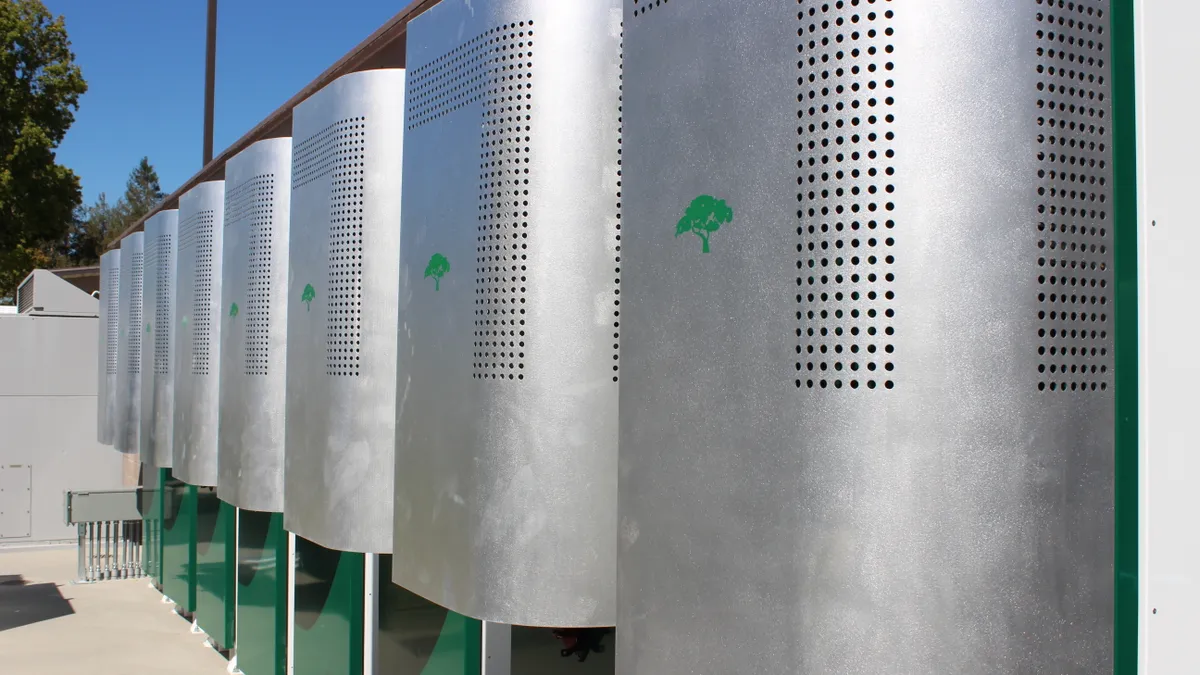Dive Brief:
- A new report focused on Minnesota's power sector and carbon-free energy options concludes that deploying storage-plus-solar facilities in Minnesota could already be more cost effective than simple-cycle gas peaking plants after 2022—but that calculation requires environmental benefits are considered.
- Researchers also showed that standalone storage will be able to compete with and displace new gas combustion turbines installed to meet peak demand by and will be more cost-effective after 2022.
- The report was developed by the Energy Transition Lab (ETL) at the University of Minnesota’s Institute on the Environment, and will be presented to the Minnesota Public Utilities Commission this morning with a live webcast available here.
Dive Insight:
Energy storage paired with solar generation could already be more cost-competitive than some gas peakers — but even if the finding is specific and conditional, the implications for battery projects in the state are clear.
"Just like solar PV, with continuing drop in storage pricing, it is now becoming cost effective in specific applications,” Connexus Vice President Brian Burandt said in a statement.
The report came out of a pair of energy storage strategy workshops which convened to assess storage opportunities in Minnesota and in the Midcontinent ISO market, Connexus participated in the workshops and is Minnesota’s largest distribution cooperative. The company is currently pursuing procurement of a 20 MW/40 MWh energy storage system.
MISO's rules for storage participation have been under scrutiny for some time because the grid operator's current structure keeps many resources from participating. According to DTE Electric, which in April asked the grid operator to consider changes, there are almost 2,800 MW of energy storage connected directly the regional grid that are "directly impacted by the lack of appropriate terms and conditions."
For Minnesota report's findings to pencil out, you have to compare the storage-solar mix to simple-cycle gas peaking plants. And then it primarily works because of a federal investment tax credit and "additional environmental benefits, including reduced greenhouse gas emissions," according to the report.
But the future economics are much more clear: After 2022, storage will be cheaper than simple-cycle peaking plants.
The report calls for some near-term actions to boost the use of storage, including develop a proposal to deploy "commercially significant" energy storage pilots and modifying the existing community solar gardens program to facilitate storage+solar projects.
In the longer-term, the report calls for updating modeling tools used by utilities and regulators for resource planning, identifying utility cost recovery mechanisms for new energy storage investments, and developing new MISO rules "that appropriately consider energy storage as a capacity and grid resource."
“While we expect broad applications will be enabled with ongoing cost reductions and performance enhancements, we believe the technology is ready today for application on our system," Burandt said.














